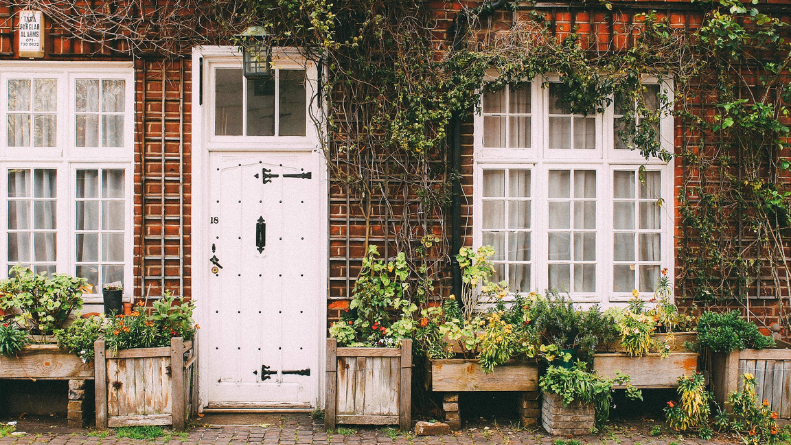What Amenities Can Raise Your Property’s Value?
When buying a home, most people are looking for more than just a roof over their heads—they want access to local amenities that can improve their quality of life. But what many homeowners and property investors often overlook is how these amenities significantly influence property prices. In the UK, a wide range of local features—from parks and schools to transport links and retail outlets—play a crucial role in determining a property’s value. Whether you’re looking to sell your home for a profit or invest in real estate, understanding these factors is key to making informed decisions.
Jamie Johnson, CEO of FJP Investment, once said, “The value of a property isn’t just about the building itself. It’s the amenities around it that add depth to its worth.” This couldn’t be more true, as local amenities shape not only our lifestyles but also the potential return on investment for property owners.
Let’s explore the key local amenities that can increase property values in the UK and why they matter so much.
The Importance of Proximity to Parks and Green Spaces
One of the most significant contributors to property values in urban areas is the proximity to parks and green spaces. In a world where health and well-being have become top priorities, having access to outdoor spaces has become even more critical. People want to escape the hustle and bustle of city life and enjoy the serenity that nature provides.
In London, the presence of park space within 1km of a home can raise property prices by 0.08% per hectare, according to research from the Greater London Authority . While this percentage may seem small, it can make a noticeable difference in high-value areas, especially in the capital, where property prices are already among the highest in the country.
Nationwide, the impact of parks on property values is even more profound. Research suggests that homes within walking distance of a regional park can see an increase of up to 2.9% in value . Meanwhile, properties located within 100 metres of urban green spaces tend to be £2,500 more expensive on average than those further away .
The desire for green spaces isn’t just confined to large parks. Small, local parks or even communal gardens in suburban or rural areas can add appeal to a property, providing potential buyers with a more peaceful and scenic environment. As work-life balance becomes a priority for more UK residents, the presence of such spaces will only grow in importance.
Schools, Education, and Property Prices
It’s no secret that schools can make or break a property’s value. For many families, proximity to high-performing schools is one of the most crucial factors when choosing where to live. In the UK, catchment areas for top-rated schools can create fierce competition in the property market, pushing up house prices in surrounding areas.
Properties in the catchment areas of top-rated schools can fetch a premium of as much as 20% over those outside it. In some cases, the demand for homes near a sought-after school can push prices up by as much as £40,000 . This is particularly true in major cities such as London, Manchester, and Birmingham, where the demand for quality education is incredibly high.
But it’s not just about academic performance. The presence of good local nurseries, primary schools, and secondary schools, as well as access to higher education institutions, all play a part in boosting the desirability of a location. For example, families with young children will prioritise access to good primary schools, while those with teenagers may look for areas near reputable secondary schools and colleges.
The ripple effect is real: good schools attract families, which in turn creates demand for homes. Increased demand means higher property prices, making it a win-win for homeowners and investors looking to capitalise on the educational appeal of a neighbourhood.
Public Transport and Its Impact on Value
Public transport links are one of the most important factors affecting property values, particularly in large cities like London, Manchester, and Birmingham, where commuting is an essential part of daily life. The better connected a property is, the more desirable it becomes.
Access to underground stations, overground rail, trams, and bus networks can significantly influence a property’s value. For instance, in London, homes near Tube stations or mainline rail services are highly coveted because of the convenience they offer. This isn’t just true for the capital—properties in cities across the UK see price increases when located near good transport links.
Being close to a station, for example, can add between 10% and 15% to the value of a property, depending on the city . Properties within a short walk of a station are especially attractive to commuters who value their time and the ease of reaching work. In some parts of London, being within 500 metres of a Tube station can add up to £50,000 to the price of a property .
Public transport improvements also offer investment opportunities. For example, the introduction of Crossrail (now known as the Elizabeth Line) boosted property prices along its route long before the line was completed. Similarly, future transport projects like HS2 are expected to have a significant impact on property values in cities like Birmingham and Manchester.
For investors, keeping an eye on planned infrastructure developments can lead to smart property purchases that offer substantial returns as transport networks expand and improve.

How Retail and Leisure Amenities Add to Property Appeal
Another major factor in determining the value of a property is its proximity to retail outlets, restaurants, cafes, and entertainment options. In the UK, the desire for convenience and lifestyle amenities has become a priority for many buyers and renters alike.
Properties near high streets, shopping centres, or local markets tend to be more desirable due to the convenience they offer. The ability to walk to a nearby shop or grab a coffee without needing a car is seen as a huge plus. As a result, areas with a wide range of retail options tend to have higher property values.
It’s not just retail, though. The presence of leisure facilities such as gyms, cinemas, and theatres also contributes to a property’s appeal. Areas with thriving entertainment options are particularly popular among young professionals and families who want to enjoy a vibrant social life without having to travel far from home.
Moreover, dining options play an increasingly important role. Neighbourhoods with trendy restaurants, pubs, and cafes tend to attract a certain demographic, often referred to as the “café culture” crowd. These areas can see property prices rise faster than those with fewer dining and socialising options.
For instance, in parts of London and Manchester, the rise of artisan cafes and gourmet restaurants has led to property price increases in formerly overlooked areas. As buyers seek to live near thriving cultural hubs, neighbourhoods that offer a mix of food and drink options are increasingly seen as prime real estate.
The Future of Property Investment in the UK
As the UK property market evolves, so too will the factors that drive property values. While traditional amenities like parks, schools, and transport links will always play a role, emerging trends in technology and sustainability will shape the future of property investment.
For example, the rise of electric vehicles is already leading to an increased demand for homes with charging stations. In the future, having access to green technology and energy-efficient homes may become as crucial to property values as proximity to a good school or train station.
Similarly, as more people work remotely, home offices and fast internet connections are becoming increasingly important. Properties with dedicated workspaces or access to coworking spaces may become more valuable as remote work becomes a permanent fixture of modern life.
For property investors, understanding these trends and the evolving demands of buyers and renters will be essential to staying ahead in a competitive market. While location and amenities will always matter, the type of amenities that add value will likely continue to shift as lifestyles and technology change.
Conclusion
In the UK, local amenities are one of the most important factors that influence property values. Whether it’s the proximity to green spaces, access to top-rated schools, efficient public transport, or retail and leisure options, these features shape the desirability of a location and the price tag that comes with it.
For homeowners and investors alike, staying informed about what buyers value most can make all the difference in capitalising on property opportunities. It’s the amenities around a property that add depth to its worth.
By paying attention to both current and emerging trends in local amenities, you’ll be better positioned to make smart decisions in an ever-changing market.
ARE YOU READY TO START INVESTING?
Subscribe to our mailing list now for exclusive deals, investment guides and the latest information from the property market.







